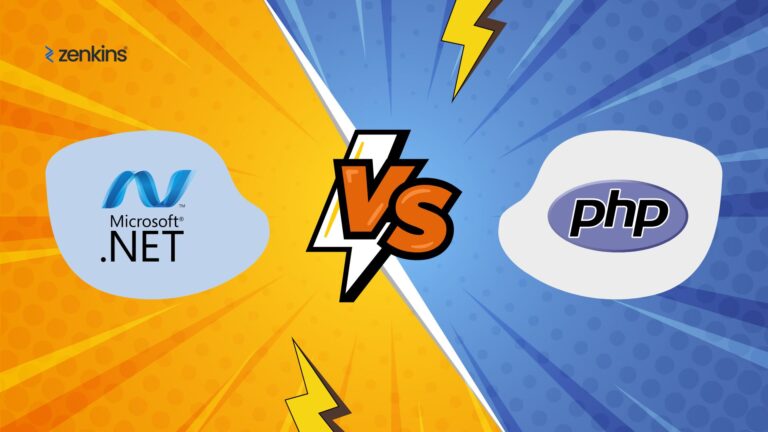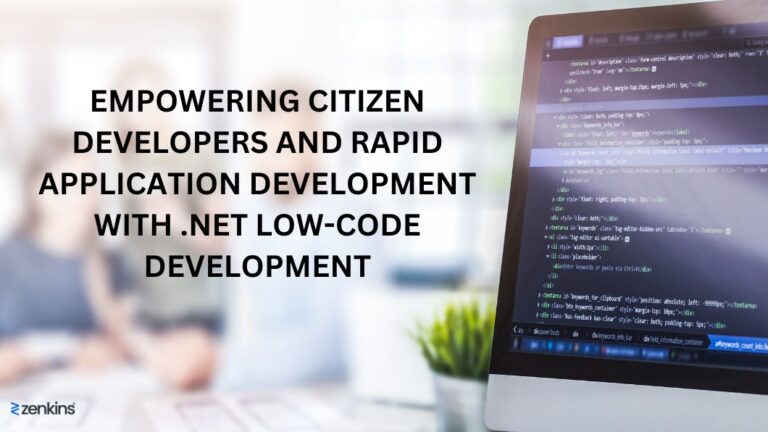The Rise of Minimal APIs in .NET: A Comprehensive Guide
Table of Contents
Introduction
The software development landscape is constantly evolving, with new technologies and frameworks emerging to streamline the development process. One such innovation making waves in the .NET ecosystem is Minimal APIs in .NET. Introduced in .NET 6, Minimal APIs offer a lightweight and simplified approach to building HTTP APIs with fewer lines of code and reduced complexity. This makes them an excellent choice for microservices, small applications, and prototyping where full-blown MVC frameworks might be overkill.
In this comprehensive guide, we will explore the rise of Minimal APIs in .NET, what makes them an attractive choice for developers, and how to implement them in your projects. We’ll cover everything from the basics to advanced usage scenarios, complete with examples and best practices. By the end of this guide, you’ll have a solid understanding of Minimal APIs in .NET and how to leverage them effectively in your development workflow.
What are Minimal APIs in .NET?
Minimal APIs are a new, streamlined way of building APIs in .NET with a simplified programming model. Unlike traditional API frameworks such as ASP.NET MVC or ASP.NET Web API, Minimal APIs focus on reducing the boilerplate code and configuration typically required to set up and run an HTTP API.
Key Features of Minimal APIs:
- Simplicity: Minimal APIs require fewer lines of code and are easier to set up compared to traditional frameworks.
- Performance: With a lighter footprint, Minimal APIs offer improved performance, making them ideal for high-performance, low-latency applications.
- Flexibility: Minimal APIs are highly flexible, allowing developers to pick and choose only the components they need, reducing unnecessary dependencies.
- Ease of Use: Minimal APIs provide a straightforward programming model with minimal setup, making it easy for developers to get started quickly.
Why Choose Minimal APIs in .NET?
- Reduced Complexity: Minimal APIs allow you to write just the essentials, eliminating much of the boilerplate associated with traditional ASP.NET Core projects. This makes the codebase cleaner and easier to maintain.
- Faster Development: Due to their simplicity, Minimal APIs enable rapid development and iteration, which is particularly useful for creating prototypes or microservices where time is a critical factor.
- Improved Performance: By reducing middleware and focusing only on necessary components, Minimal APIs can deliver faster request processing and reduced memory usage.
- Great for Microservices: Minimal APIs are well-suited for microservices architectures where services are small, independent, and focused on specific tasks. Their lightweight nature makes them perfect for this environment.
- Learning Curve: For developers new to .NET or those familiar with other lightweight API frameworks, Minimal APIs offer a gentle learning curve, making them an accessible entry point into the .NET ecosystem.
How to Implement Minimal APIs in .NET
Step 1: Setting Up the Development Environment
Before diving into Minimal APIs, ensure that you have the latest version of .NET installed on your machine. You can download it from the official Microsoft .NET website.
You will also need an IDE that supports .NET development, such as Visual Studio or Visual Studio Code. Once your environment is set up, you can start creating a Minimal API project.
Step 2: Creating a Minimal API Project
To get started, open your terminal and create a new .NET project using the dotnet new command:
dotnet new web -o MinimalApiExample
cd MinimalApiExampleThe above command creates a new minimal web application in a folder called MinimalApiExample. This template includes the basic structure needed to start working with Minimal APIs.
Step 3: Writing Your First Minimal API
In the Program.cs file, which serves as the entry point for your application, you can start defining your Minimal API endpoints. Below is an example of a simple API that handles GET requests:
var builder = WebApplication.CreateBuilder(args);
var app = builder.Build();
app.MapGet("/", () => "Hello, World!");
app.Run();
This example demonstrates the core simplicity of Minimal APIs. Here, app.MapGet is used to define a GET endpoint that returns “Hello, World!” when accessed at the root URL (/).
Step 4: Adding More Endpoints
You can expand your API by adding more endpoints for different HTTP methods such as POST, PUT, and DELETE. Here’s an example:
app.MapGet("/items", () => new List<string> { "Item1", "Item2", "Item3" });
app.MapPost("/items", (string newItem) =>
{
// Logic to add the new item
return Results.Created($"/items/{newItem}", newItem);
});
app.MapPut("/items/{id}", (int id, string updatedItem) =>
{
// Logic to update the item with the specified id
return Results.NoContent();
});
app.MapDelete("/items/{id}", (int id) =>
{
// Logic to delete the item with the specified id
return Results.NoContent();
});In this example, we define endpoints for getting, adding, updating, and deleting items. Notice how concise and readable the code is, highlighting the simplicity of Minimal APIs.
Step 5: Adding Dependency Injection
Minimal APIs fully support dependency injection, allowing you to inject services directly into your endpoints. Here’s how you can register and use services:
builder.Services.AddSingleton<IItemService, ItemService>();
app.MapGet("/items", (IItemService itemService) => itemService.GetItems());In this example, IItemService is a service that provides item-related functionality. By injecting it directly into the endpoint, you can maintain a clean and modular code structure.
Step 6: Using Middleware
Minimal APIs support middleware for handling cross-cutting concerns like logging, authentication, and error handling. You can add middleware using the app.Use method:
app.Use(async (context, next) =>
{
// Custom middleware logic before the request is processed
await next.Invoke();
// Custom middleware logic after the request is processed
});For more complex middleware scenarios, you can use the full power of ASP.NET Core middleware components in conjunction with Minimal APIs.
Step 7: Configuring Routing and Validation
Routing in Minimal APIs is flexible and supports advanced scenarios, including parameter validation and constraints:
app.MapGet("/items/{id:int}", (int id) =>
{
// Logic to retrieve the item by id
return Results.Ok($"Item {id}");
})
.WithName("GetItemById")
.Produces<string>(StatusCodes.Status200OK)
.Produces(StatusCodes.Status404NotFound);This example defines a route with an integer constraint and includes response type annotations for better API documentation and client integration.
Step 8: Error Handling in Minimal APIs
Handling errors is crucial for robust API development. Minimal APIs allow you to define global error-handling middleware to manage exceptions consistently:
app.UseExceptionHandler("/error");
app.MapGet("/error", () => Results.Problem("An error occurred"));
For specific endpoint-level error handling, you can use try-catch blocks or custom middleware as needed.
Best Practices for Using Minimal APIs in .NET
- Keep it Simple: The primary advantage of Minimal APIs is their simplicity. Avoid over-complicating your endpoints with excessive logic.
- Use Dependency Injection Wisely: Leverage dependency injection to keep your endpoints clean and maintainable. This also promotes testability.
- Leverage Middleware: Use middleware for cross-cutting concerns like logging, error handling, and authentication, keeping your endpoints focused on their core responsibilities.
- Consistent Error Handling: Implement consistent error handling strategies to provide meaningful error messages and HTTP status codes to clients.
- Secure Your APIs: Always implement security best practices, including input validation, authentication, and authorization, to protect your APIs from vulnerabilities.
- Performance Optimization: Use performance monitoring tools to identify bottlenecks and optimize your API for better response times and resource usage.
How do I handle authentication and authorization in Minimal APIs?
Minimal APIs fully support ASP.NET Core’s built-in authentication and authorization mechanisms, allowing you to secure your endpoints just like you would in a traditional ASP.NET Core application. To implement authentication, you can use middleware such as UseAuthentication and UseAuthorization, and leverage services like JWT, OAuth, or custom authentication schemes.
Here’s a simple example of adding JWT-based authentication to a Minimal API:
- Configure Services for Authentication: In your
Program.cs, register the authentication services, and configure JWT:
var builder = WebApplication.CreateBuilder(args);
// Add services to the container.
builder.Services.AddAuthentication("Bearer")
.AddJwtBearer("Bearer", options =>
{
options.Authority = "https://your-auth-server.com";
options.TokenValidationParameters = new TokenValidationParameters
{
ValidateAudience = false
};
});
builder.Services.AddAuthorization(options =>
{
options.AddPolicy("ApiScope", policy =>
{
policy.RequireAuthenticatedUser();
policy.RequireClaim("scope", "api.read");
});
});
var app = builder.Build();
// Add middleware for authentication and authorization
app.UseAuthentication();
app.UseAuthorization();- Secure Your Endpoints: Apply authorization to specific endpoints using
[Authorize]attributes or by configuring endpoint-level policies:
app.MapGet("/secure-data", [Authorize(Policy = "ApiScope")] () =>
{
return Results.Ok("This is secure data.");
});This setup ensures that only authenticated and authorized users can access specific endpoints, adhering to the security best practices for API development.
How do I validate input in Minimal APIs?
Input validation is crucial for maintaining the integrity and security of your API. In Minimal APIs, you can perform validation using simple validation checks directly in the endpoints or leverage built-in validation attributes.
For example, using model binding with validation attributes:
public class Item
{
[Required]
public string Name { get; set; }
[Range(1, 100)]
public int Quantity { get; set; }
}
app.MapPost("/items", (Item item) =>
{
if (!MiniValidator.TryValidate(item, out var errors))
{
return Results.BadRequest(errors);
}
// Logic to process the item
return Results.Created($"/items/{item.Name}", item);
});In this example, the MiniValidator is a lightweight validation tool that can be used to check the validity of models and return appropriate responses when validation fails.
How do I handle versioning in Minimal APIs?
API versioning is a best practice that allows your application to evolve without breaking existing clients. You can implement versioning in Minimal APIs by adding version information to routes, query strings, or headers.
Here’s an example of route-based versioning:
app.MapGet("/v1/items", () =>
{
// Logic for version 1 of the endpoint
return Results.Ok(new { Version = "v1", Data = new List<string> { "Item1", "Item2" } });
});
app.MapGet("/v2/items", () =>
{
// Logic for version 2 of the endpoint
return Results.Ok(new { Version = "v2", Data = new List<string> { "Item1", "Item2", "Item3" } });
});This approach allows you to clearly define different versions of your API endpoints, helping clients to migrate gradually to newer versions.
How to Document Minimal APIs?
Documentation is essential for API usability and adoption. Minimal APIs can be documented using tools like Swagger (OpenAPI) to automatically generate interactive API documentation.
To add Swagger support, you can use the Swashbuckle.AspNetCore package:
- Install Swagger:Add the Swagger package to your project:
dotnet add package Swashbuckle.AspNetCore- Configure Swagger:Configure Swagger services and middleware in
Program.cs:
builder.Services.AddEndpointsApiExplorer();
builder.Services.AddSwaggerGen();
var app = builder.Build();
// Enable middleware to serve generated Swagger as a JSON endpoint.
app.UseSwagger();
// Enable middleware to serve swagger-ui (HTML, JS, CSS, etc.),
// specifying the Swagger JSON endpoint.
app.UseSwaggerUI();
// Map endpoints
app.MapGet("/", () => "Hello, world!");
app.Run();Swagger provides a UI where developers can test endpoints, view request and response formats, and understand the available routes and parameters, making it easier for consumers to integrate with your API.
How to Test Minimal APIs?
Testing Minimal APIs is straightforward due to their simplicity and the ability to inject dependencies. You can use xUnit, NUnit, or any other testing framework alongside mocking libraries like Moq for unit testing.
Here’s a basic example of testing a Minimal API using xUnit and Moq:
- Create a Test Project: Add a test project to your solution:
dotnet new xunit -o MinimalApiTests- Write Tests for Endpoints: A sample unit test for a GET endpoint might look like this:
public class MinimalApiTests
{
[Fact]
public async Task GetItems_ReturnsExpectedItems()
{
// Arrange
var builder = WebApplication.CreateBuilder();
var app = builder.Build();
app.MapGet("/items", () => new List<string> { "Item1", "Item2" });
var client = app.CreateClient();
// Act
var response = await client.GetAsync("/items");
var content = await response.Content.ReadAsStringAsync();
// Assert
response.EnsureSuccessStatusCode();
Assert.Contains("Item1", content);
}
}
This approach allows you to directly test the behavior of your endpoints, ensuring that your API functions as expected.
FAQs: Minimal APIs in .NET
What are Minimal APIs in .NET?
Minimal APIs in .NET are a streamlined, lightweight approach to building HTTP APIs with minimal setup and code, introduced in .NET 6. They provide a simpler alternative to traditional ASP.NET Core Web APIs.
How do Minimal APIs differ from traditional ASP.NET Core APIs?
Minimal APIs focus on simplicity and reduced boilerplate code, making them ideal for small services and microservices. Traditional ASP.NET Core APIs, on the other hand, offer a more structured approach with MVC patterns, controllers, and views, suitable for larger, more complex applications.
Can Minimal APIs be used in production?
Yes, Minimal APIs are production-ready and can be used for various applications, including microservices and serverless functions. They offer full access to ASP.NET Core’s features, including dependency injection, middleware, and routing.
What are the benefits of using Minimal APIs in .NET?
The key benefits include reduced code complexity, faster development cycles, improved performance, and easier maintenance. They are also great for prototyping and rapid iterations.
Are Minimal APIs suitable for large applications?
While Minimal APIs are ideal for small to medium-sized applications, they can be used in larger applications as well, especially when combined with microservices architectures. However, for very complex applications, the traditional MVC approach may still be more appropriate.
Can Minimal APIs be extended with middleware?
Yes, Minimal APIs support middleware, allowing you to extend their functionality with custom or built-in middleware components, such as authentication, logging, and error handling.
Are Minimal APIs supported in cloud environments?
Absolutely. Minimal APIs are lightweight and perform well in cloud environments, including Azure, AWS, and Google Cloud. They are particularly suited for serverless and containerized deployments.
What are the common use cases for Minimal APIs?
Minimal APIs are ideal for microservices, serverless applications, rapid prototyping, small web services, and scenarios where simplicity and performance are crucial.
Can I migrate existing ASP.NET Core APIs to Minimal APIs?
Yes, you can refactor existing ASP.NET Core APIs to Minimal APIs, especially if the application structure is simple. However, for complex applications, evaluate the benefits and potential challenges before migrating.
Conclusion
Minimal APIs in .NET represent a significant shift towards simplicity and performance in API development. By reducing the complexity and boilerplate of traditional API frameworks, Minimal APIs empower developers to build lightweight, efficient, and scalable applications with ease. They are particularly well-suited for microservices, serverless functions, and scenarios where rapid development and minimal overhead are key.
Whether you are building a small-scale service or exploring microservices architecture, Minimal APIs offer a compelling choice with their streamlined approach and full compatibility with .NET’s robust ecosystem.
Embracing Minimal APIs can significantly enhance your development experience, allowing you to focus more on business logic and less on the underlying infrastructure. As the .NET ecosystem continues to evolve, Minimal APIs are poised to play a crucial role in shaping the future of API development.




